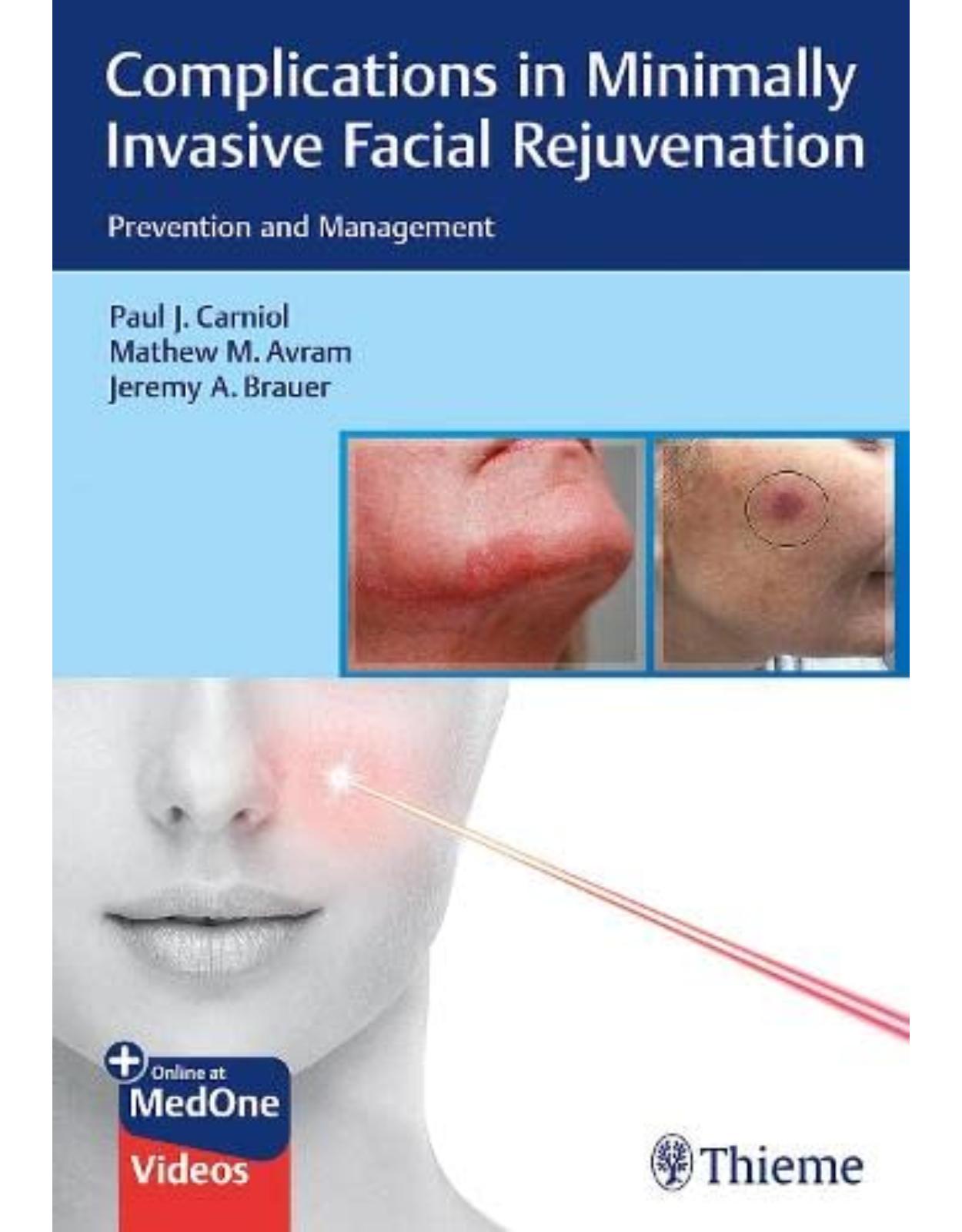
Complications in Minimally Invasive Facial Rejuvenation
Livrare gratis la comenzi peste 500 RON. Pentru celelalte comenzi livrarea este 20 RON.
Disponibilitate: La comanda in aproximativ 4 saptamani
Editura: Thieme
Limba: Engleza
Nr. pagini: 244
Coperta: Hardcover
Dimensiuni: 25.4 x 17.78 cm
An aparitie: 2021
Description:
Expert guidance on minimizing and managing risks for a wide array of facial procedures
The demand for minimally invasive facial procedures has increased exponentially over the past 20 years. In fact, an AAFPRS survey estimated that 80% of cosmetic facial procedures performed by their surgeons in 2019 were minimally invasive. Given the vast number of patients and underqualified practitioners administering facial surgery treatments, complications and poor outcomes are a significant issue. Complications in Minimally Invasive Facial Rejuvenation: Prevention and Management by internationally prominent facial plastic surgeon Paul J. Carniol, renowned dermatologists Mathew M. Avram and Jeremy A. Brauer, and esteemed colleagues fills a gap in the literature.
Organized in five sections and 19 chapters, the book starts with discussions of appropriate patient selection, anesthesia considerations, relevant anatomy, and potentially toxic smoke plumes generated by laser treatments and electrocautery. Section two details fillers and fat transfers for volume restoration, neuromodulators to reduce the appearance of wrinkles, and deoxycholic acid to treat submental fat. Section three covers high-energy devices and procedures such as laser resurfacing, chemical peels, vascular and pigment laser and light sources, radiofrequency, and microneedling. The final two sections feature discussion of liposuction and cryolipolysis, followed by the minimally invasive procedures threadlifting, face and neck lifts, hair transplantation, and blepharoplasty.
Key Highlights:
Important insights on avoidance and management of adverse complications such as diplopia, ptosis, deformities, and asymmetry, as well as potentially life-threatening cerebrovascular accidents, visual loss, skin loss, and infection
Extensive detailed illustrations and surgical photographs improve visual understanding of anatomical topography
High-quality videos enhance knowledge of surgical nuances, potential pitfalls, and preventive measures to avoid problems
This is an essential reference for dermatology, plastic surgery, and otolaryngology residents and fellows. Practitioners who specialize in cosmetic dermatology and facial plastic surgery will also find this an invaluable surgical companion.
Table of Contents:
Section I: Complications Prevention Essentials
1 General Approach: The Consultation—Patient Evaluation
1.1 Introduction
1.2 Assessment of Expectations
1.3 Assessment for Body Dysmorphic Disorder
1.4 Accurate History Taking
1.5 Preoperative Counseling
1.6 Conclusion
2 Anesthesia for Minimally Invasive Facial Aesthetic Surgery
2.1 The Office-Based Surgery Setting
2.2 Preprocedure Preparation
2.3 Local Anesthesia
2.3.1 Topical Local Anesthesia
2.3.2 Subcutaneous or Tissue Infiltration
2.3.3 Regional Nerve Blocks
2.3.4 Tumescent Anesthesia
2.3.5 Cryoanesthesia
2.3.6 Oral Sedation
2.3.7 Monitored Anesthesia Care
2.4 Laser-Anesthesia Complications
2.4.1 Fire
2.5 Recovery and Discharge
2.6 Conclusion
3 Anatomy
3.1 Introduction
3.2 Skin Anatomy
3.2.1 Epidermis
3.2.2 Dermis
3.3 Forehead Anatomy
3.3.1 Central Forehead and Glabella
3.3.2 Temporal Fossa
3.4 Periorbital Anatomy
3.4.1 Upper and Lower Eyelids
3.4.2 Eyebrows
3.5 Midface
3.5.1 Lid/Cheek Junction
3.5.2 Cheek
3.6 Nasal Anatomy
3.6.1 Skin–Soft Tissue Envelope
3.6.2 Deep
3.7 Facial Nerve Branches
3.7.1 Frontal Branch
3.7.2 Zygomatic Branch
3.7.3 Buccal Branch
3.7.4 Marginal Branch
3.7.5 Cervical Branch
4 Plumes, Laser/Cautery
4.1 Introduction
4.2 Inorganic Contents of the Plume
4.3 Organic Contents of the Plume
4.4 Protective Strategies
Section II: Injectables: Avoiding and Managing Complications
5 Fillers
5.1 Introduction
5.2 General Principles
5.2.1 Patient-Related Factors
5.2.2 Product-Related Factors
5.2.3 Technique-Related Factors
5.2.4 Pretreatment Prophylaxis
5.3 Adverse Reactions and Complications
5.4 Early Adverse Reactions and Management of Complications
5.4.1 Bruising
5.4.2 Edema
5.4.3 Placement Related: Inappropriate Placement and Depth, Overcorrection
5.4.4 A Tool for Management of Early Adverse Events: Use of Blunt-Tip Cannula
5.5 Inflammatory Reactions
5.5.1 Allergic Reactions and HA Hypersensitivity
5.5.2 Acute Infection
5.6 Vascular Events
5.6.1 Anatomic Considerations and Mechanisms
5.6.2 Technique
5.6.3 Identification
5.6.4 Treatment and Management of Vascular Compromise
5.7 Specific Considerations
5.7.1 Blindness
5.8 Delayed Adverse Reactions and Management of Complications
5.8.1 Noninflammatory Nodules
5.8.2 Inflammatory Reactions Including Infection and Granuloma Formation
6 Fat Transfers
6.1 Introduction
6.2 Risks and Complications
6.3 Vascular Occlusion
6.4 Atypical Infections
6.5 Fat Necrosis
6.6 Treatment of Facial Fat Necrosis
6.7 Conclusion
7 Neuromodulators for Muscle Induced Wrinkles
7.1 Introduction
7.2 Upper Face
7.3 Midface
7.4 Lower Face
7.5 Neck
8 Deoxycholic Acid
8.1 Description of Technology/Procedures
8.1.1 Introduction
8.1.2 Mechanism of Action
8.2 Optimizing Use and Avoiding Complications
8.2.1 Clinical Trials
8.2.2 Determination of Ideal Patient
8.2.3 Assessing Preplatysmal Fat
8.2.4 Proper Injection Technique
8.2.5 Common Complications
8.2.6 Complications: Nerve Injury
8.2.7 Complications: Skin Ulceration and Necrosis
8.2.8 Complications: Dysphagia
8.2.9 Complications: Alopecia
8.3 Early Identification of Complications
8.4 Managing Complications
8.5 Conclusion
Section III: High Energy Devices: Avoiding and Managing Complications
9 Laser Resurfacing
9.1 Introduction
9.2 Key Points for Maximizing Safety with Lasers and Other Energy Devices
9.3 Key Points for Maximizing Safety with Shallower-Penetrating Lasers and Energy Devices
9.4 Fractional Laser Systems
9.4.1 Nonablative Fractional Laser Systems
9.4.2 Microneedling and RF Pins/Needles
9.5 Nonfractional Ablative Treatment
9.6 Key Points for Maximizing Safety in the Eye Area
9.7 Key Points for Maximizing Safety in the Perioral/Cheek Area
9.8 Key Points for Maximizing Safety in Different Skin Types
9.9 Ethnic Skin
9.10 Tanned/Solar-Damaged Skin
9.11 X-Irradiated Skin
10 Chemical Peels
10.1 Background
10.2 Patient Selection
10.3 Preoperative Guidelines
10.4 Complication Prevention
10.5 Infection Prophylaxis
10.6 Complication Management
10.6.1 Delayed Reepithelialization
10.7 Scarring
10.7.1 Infection
10.7.2 Erythema and Hyperpigmentation
10.7.3 Hypopigmentation
10.7.4 Cardiac Arrhythmia
10.8 Conclusion
11 Vascular and Pigment Laser and Light Sources
11.1 Vascular and Pigment Laser and Light Sources
11.1.1 Laser Treatment of Vascular Lesions
11.1.2 Choice of Device—Wavelength and Pulse Duration
11.1.3 Enhancing Outcomes in the Treatment of Vascular Lesions
11.2 Laser Treatment of Pigmented Lesions
11.2.1 Nanosecond and Picosecond Lasers (1,064 nm, 755 nm, 532 nm)
11.2.2 Long-Pulsed Lasers (532 nm, 595 nm, 755 nm, 800–890 nm, 1,064 nm)
11.2.3 Light Sources
11.2.4 Pigment Nonspecific Lasers
11.2.5 Combination of Lasers
11.3 Managing Complications from Laser Treatment of Vascular and Pigmented Lesions
11.4 Conclusion
12 Radiofrequency and Microneedle Radiofrequency
12.1 Introduction
12.2 Science of RF
12.3 Neocollagenesis
12.4 Methods of RF Delivery
12.5 Safety Measures
12.6 Patient Selection
12.7 Complications
12.7.1 Prolonged Swelling, Erythema, Discomfort
12.7.2 Postinflammatory Hyperpigmentation (PIH)
12.7.3 Second-Degree Burn
12.7.4 Fat Loss
12.7.5 Textural Abnormalities
12.7.6 Acne Flair/Infection
12.7.7 Dysesthesia/Neuropraxia
12.7.8 Seroma/Cyst
12.8 Conclusion
13 Complications of Platelet-Rich Plasma and Microneedling
13.1 Platelet-Rich Plasma—An Introduction
13.2 Platelet-Rich Plasma—Avoiding, Identifying, and Managing Complications
13.3 Microneedling—An Introduction
13.4 Microneedling—Avoiding, Identifying, and Managing Complications
Section IV: Lipo Reduction: Avoiding and Managing Complications
14 Liposuction
14.1 Background
14.2 Preoperative Evaluation
14.2.1 Physical Examination and Laboratory Evaluation
14.2.2 Anesthetic Planning
14.2.3 Selecting the Right Tools to Optimize Aesthetic Results
14.3 Procedure
14.3.1 Cannulas
14.3.2 General Principles of Surgical Technique
14.3.3 Malar Fat Pad and Cheek Contouring
14.3.4 Treatment of the Nasolabial Fold and Pretragal Sulcus
14.3.5 Treatment of the Jowl
14.3.6 Submental Liposuction
14.3.7 Facial and Periorbital Autologous Fat Transfer
14.3.8 Liposuction of Other Body Sites
14.4 Postoperative Considerations
14.5 Minimizing Risks
14.6 Management of Complications
14.6.1 Pain and Edema
14.6.2 Vascular Complications
14.6.3 Suboptimal Aesthetic Outcomes
14.6.4 Perforation Injury
14.6.5 Intravascular Volume Redistribution
14.6.6 Nerve Injury
14.6.7 Infection
14.6.8 Seroma
14.6.9 Delayed Improvement
14.6.10 Lidocaine Toxicity
14.7 Conclusions
15 Cryolipolysis
15.1 Introduction
15.2 Cryolipolysis Mechanism of Action
15.3 Safety Profile of Cryolipolysis
15.4 Paradoxical Adipose Hyperplasia in Cryolipolysis
15.5 Delayed Post-treatment Pain in Cryolipolysis
15.6 Miscellaneous Complications in Cryolipolysis
15.7 Introduction to ATX-101
15.8 Safety Profile of ATX-101
15.9 Marginal Mandibular Nerve Injury with ATX-101
15.10 Vascular Complications in ATX-101
15.11 Conclusion
Section V: Minimally Invasive Surgery: Avoiding and Managing Complications
16 Thread Lift
16.1 Introduction
16.2 Complications
16.3 PDO Threads
16.4 Prevention of Complications Utilizing PDO Threads
16.4.1 Patient Selection
16.4.2 Patient Informed Consent
16.4.3 Treatment Protocols
16.4.4 Posttreatment Instructions and Protocols
16.5 Management of Complications
16.5.1 Bruising
16.5.2 Mild-to-Moderate Puckering/Irregularity
16.5.3 Severe Puckering/Irregularity of Superficial Placement of Threads
16.5.4 Infection
16.6 Conclusion
17 SMAS Lift
17.1 Introduction
17.2 Indications and Patient Selection
17.3 Surgical Technique
17.3.1 Procedure Details
17.3.2 Optimizing Results
17.4 Complications
17.4.1 Minimizing Risk and Complications
17.4.2 Early Identification of Complications
17.4.3 Management of Complications
18 Hair Transplantation
18.1 Introduction
18.2 Current Hair Transplantation Technique
18.3 Unfavorable Results in Hair Transplantation
18.3.1 Hairline that is Too Low and/or Too Straight.
18.3.2 Grafts Too Large (Too Many Hairs Per Graft) Giving a Clumpy (Pluggy) Appearance
18.3.3 Scarring Alopecia of the Donor Site
18.3.4 Poor Hair Growth After Hair Transplantation
18.4 Conclusion
19 Blepharoplasty
19.1 Introduction
19.2 Patient Evaluation
19.3 Common Postoperative Problems: Their Avoidance and Correction
19.3.1 Upper Eyelid Blepharoplasty Complications
19.3.2 Lower Eyelid Blepharoplasty Complications
19.3.3 Uncommon/Catastrophic Blepharoplasty Complications
19.4 Conclusion
Index
Additional MedOne Information
| An aparitie | 2021 |
| Autor | Paul J. Carniol, Mathew M. Avram, Jeremy A. Brauer |
| Dimensiuni | 25.4 x 17.78 cm |
| Editura | Thieme |
| Format | Hardcover |
| ISBN | 9781684200139 |
| Limba | Engleza |
| Nr pag | 244 |
| Versiune digitala | DA |
-
2,73600 lei 2,32600 lei

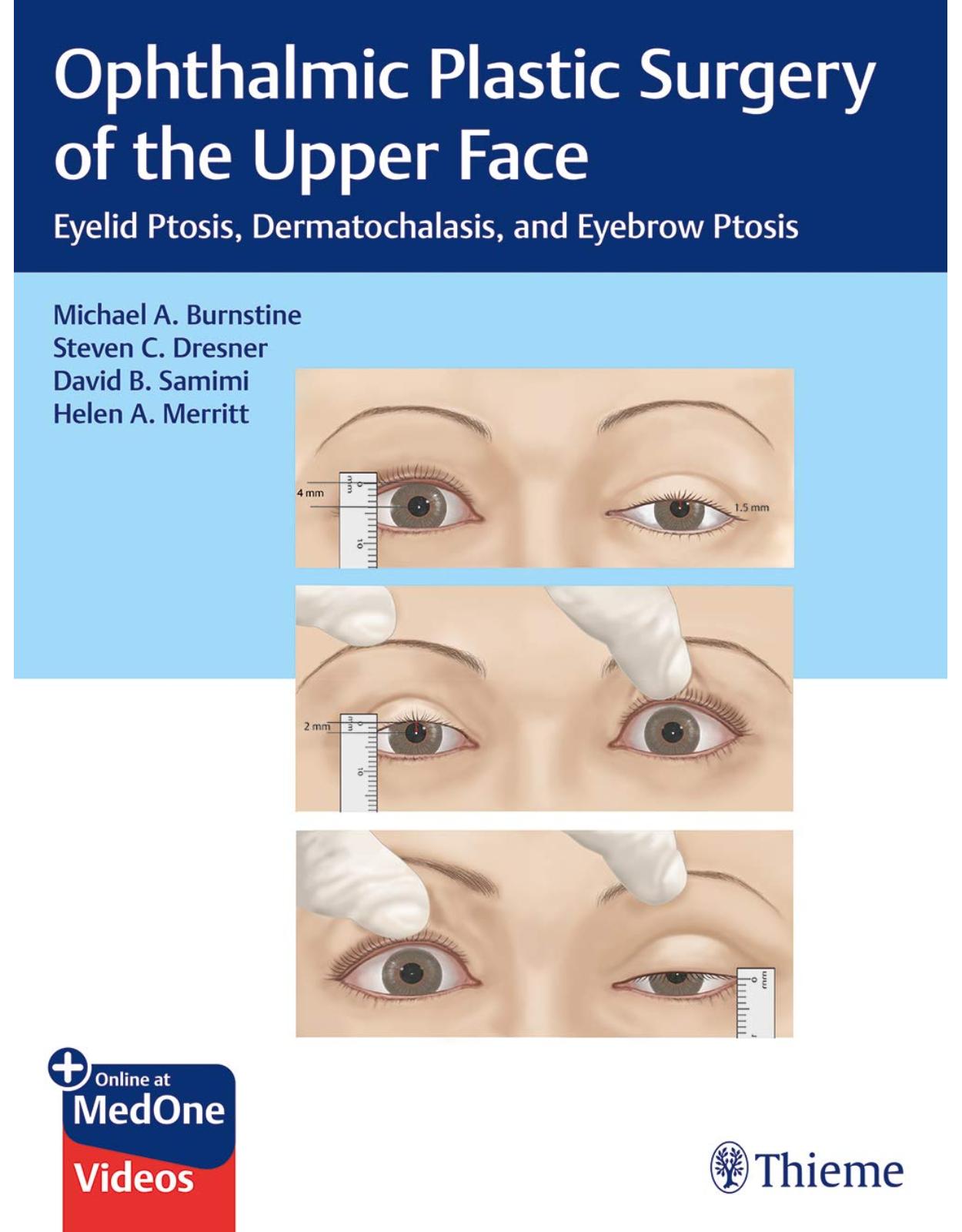
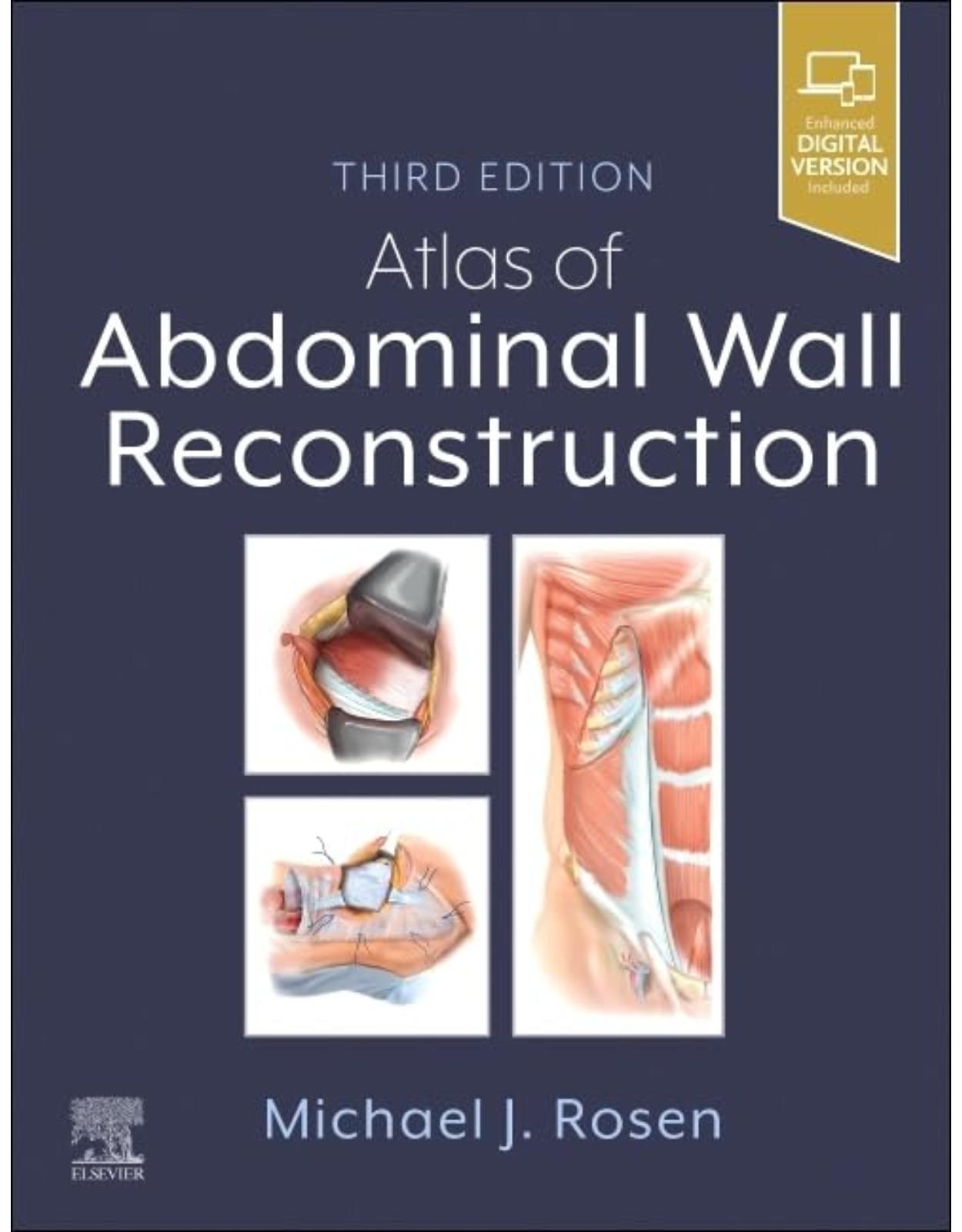
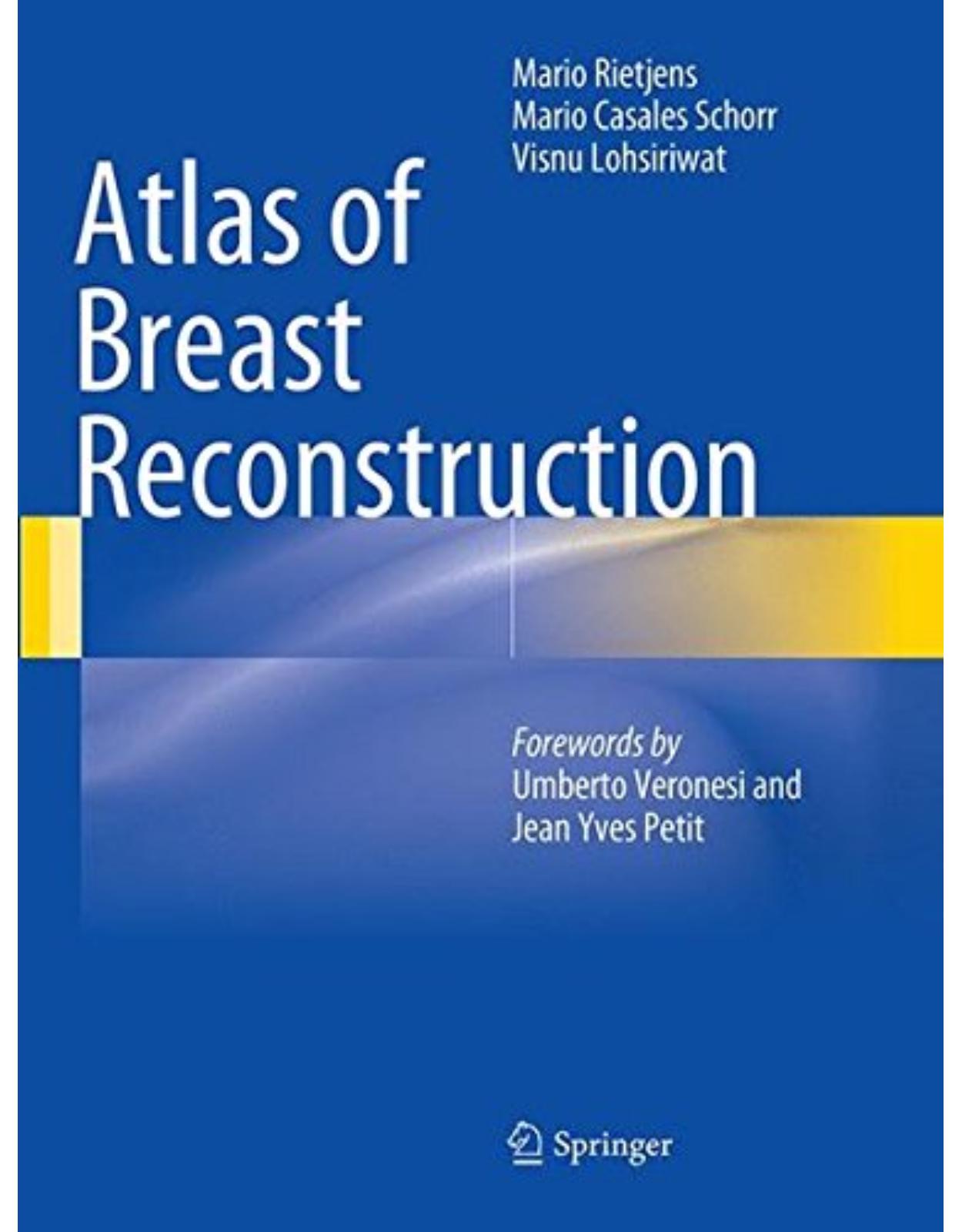
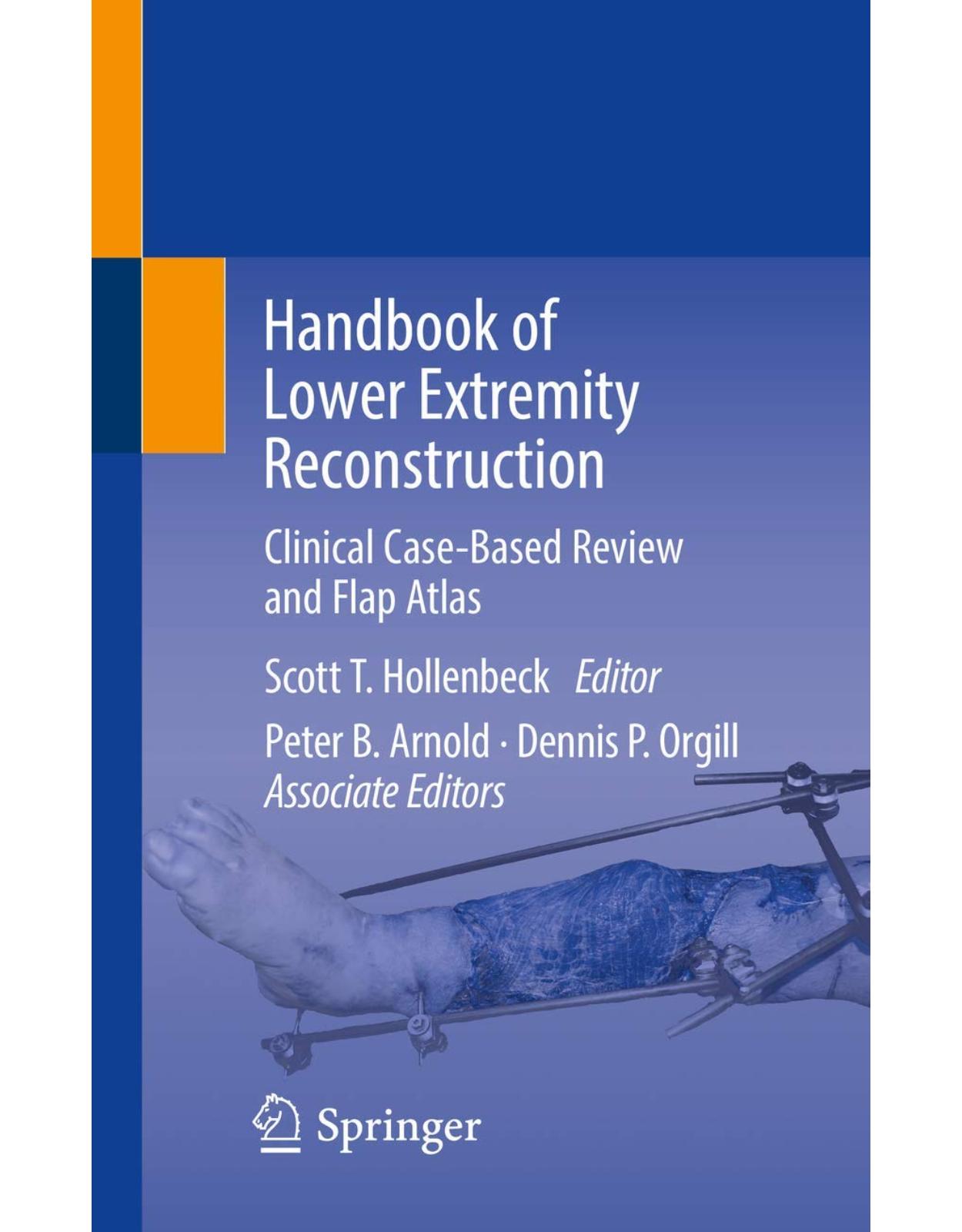
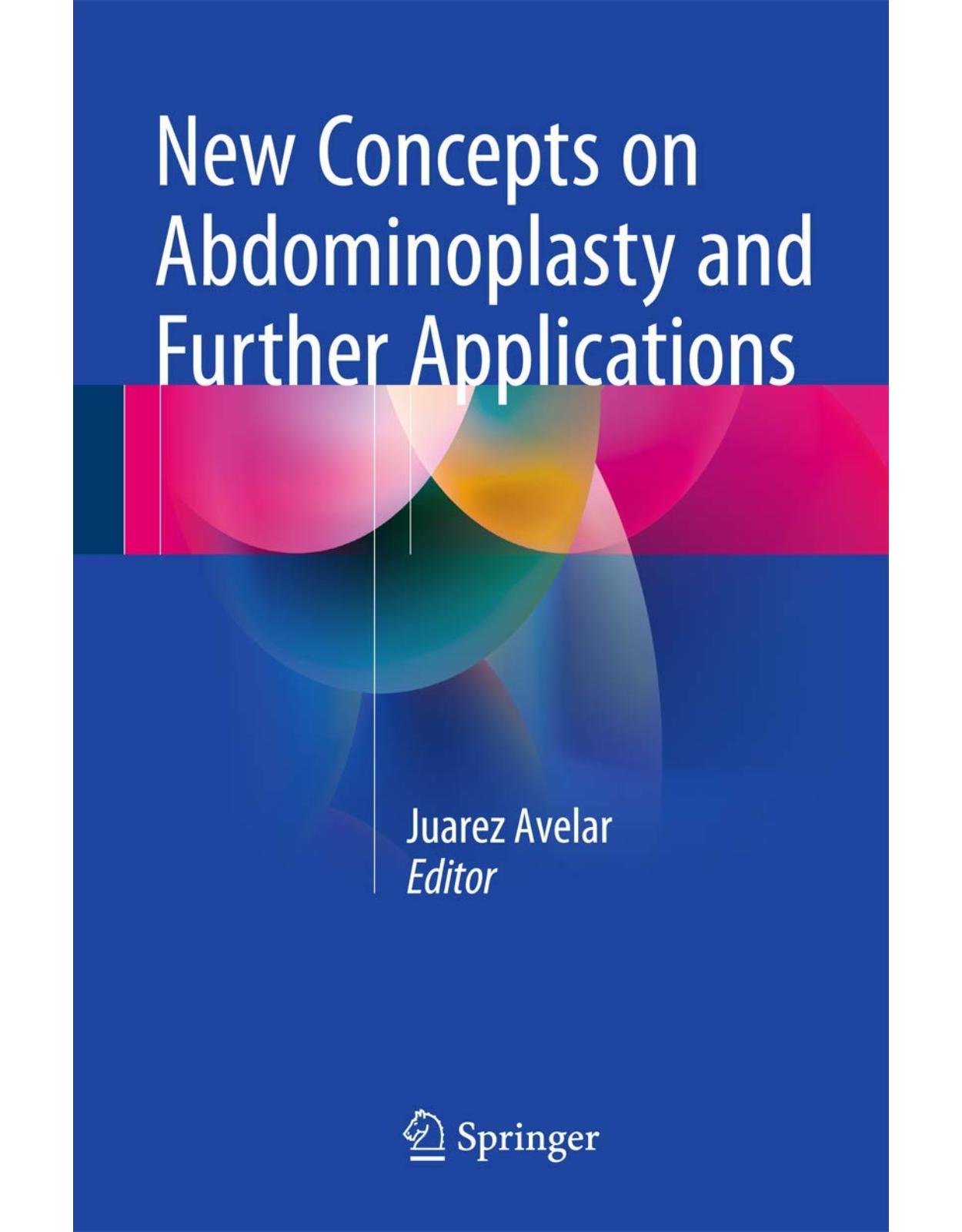
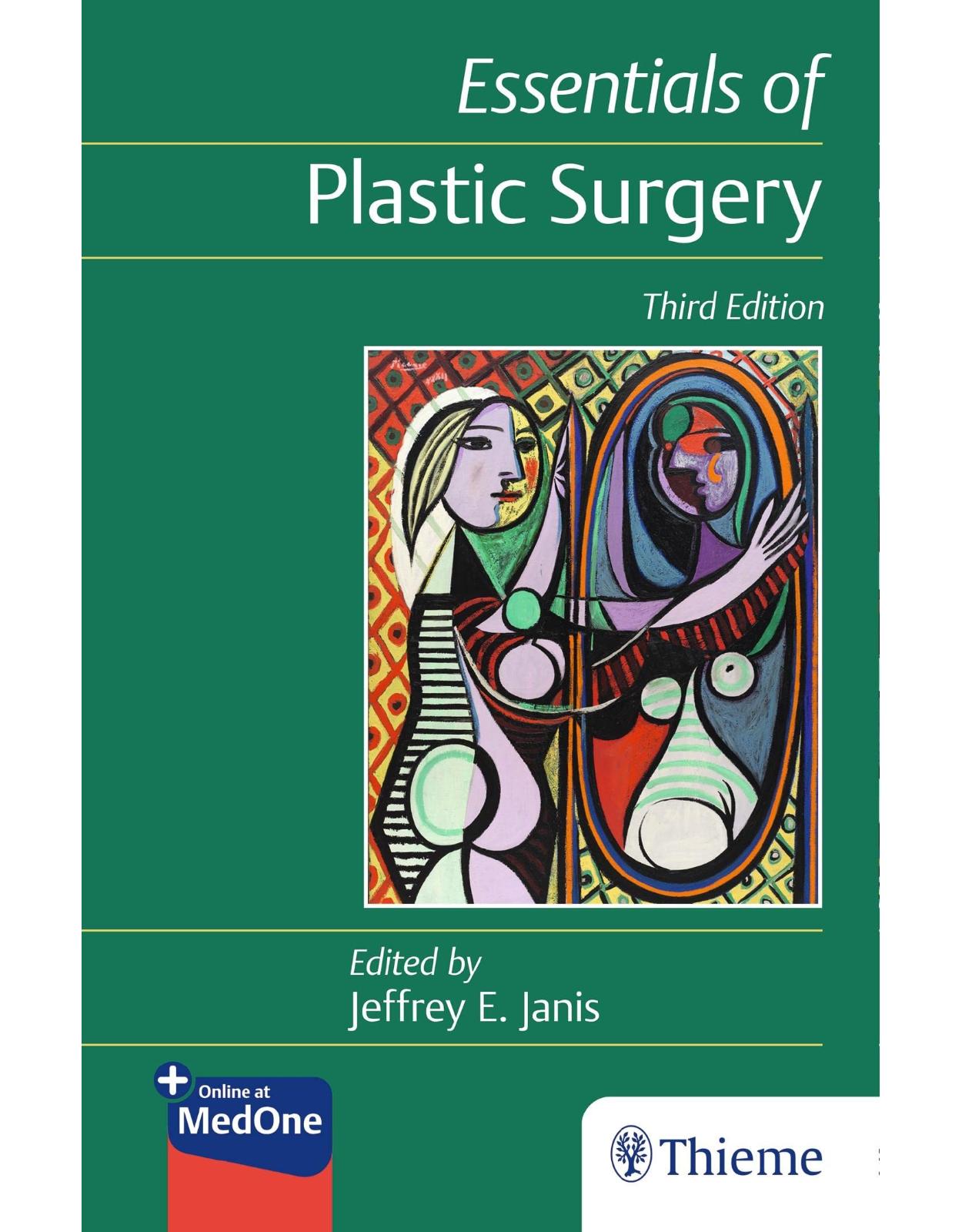
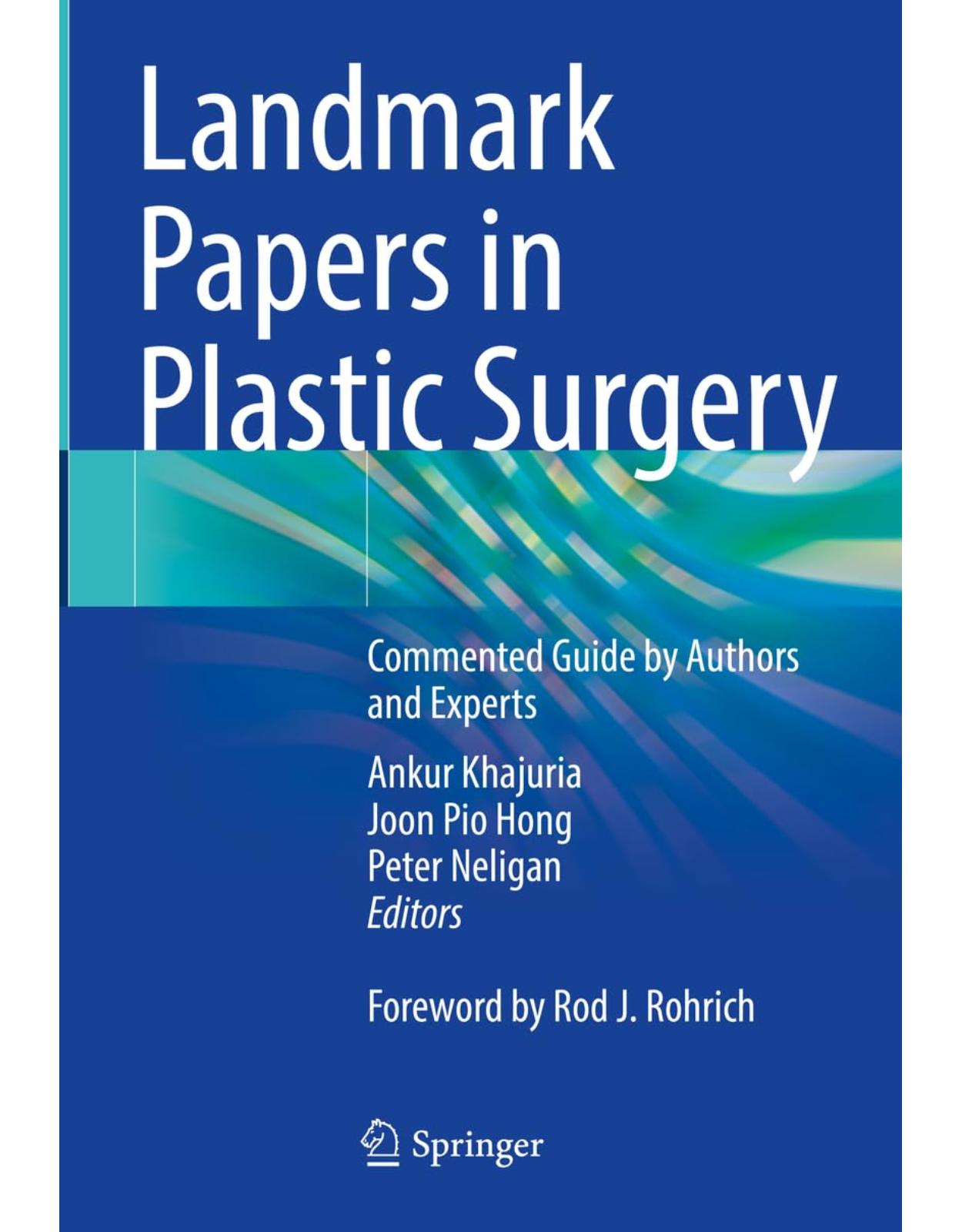
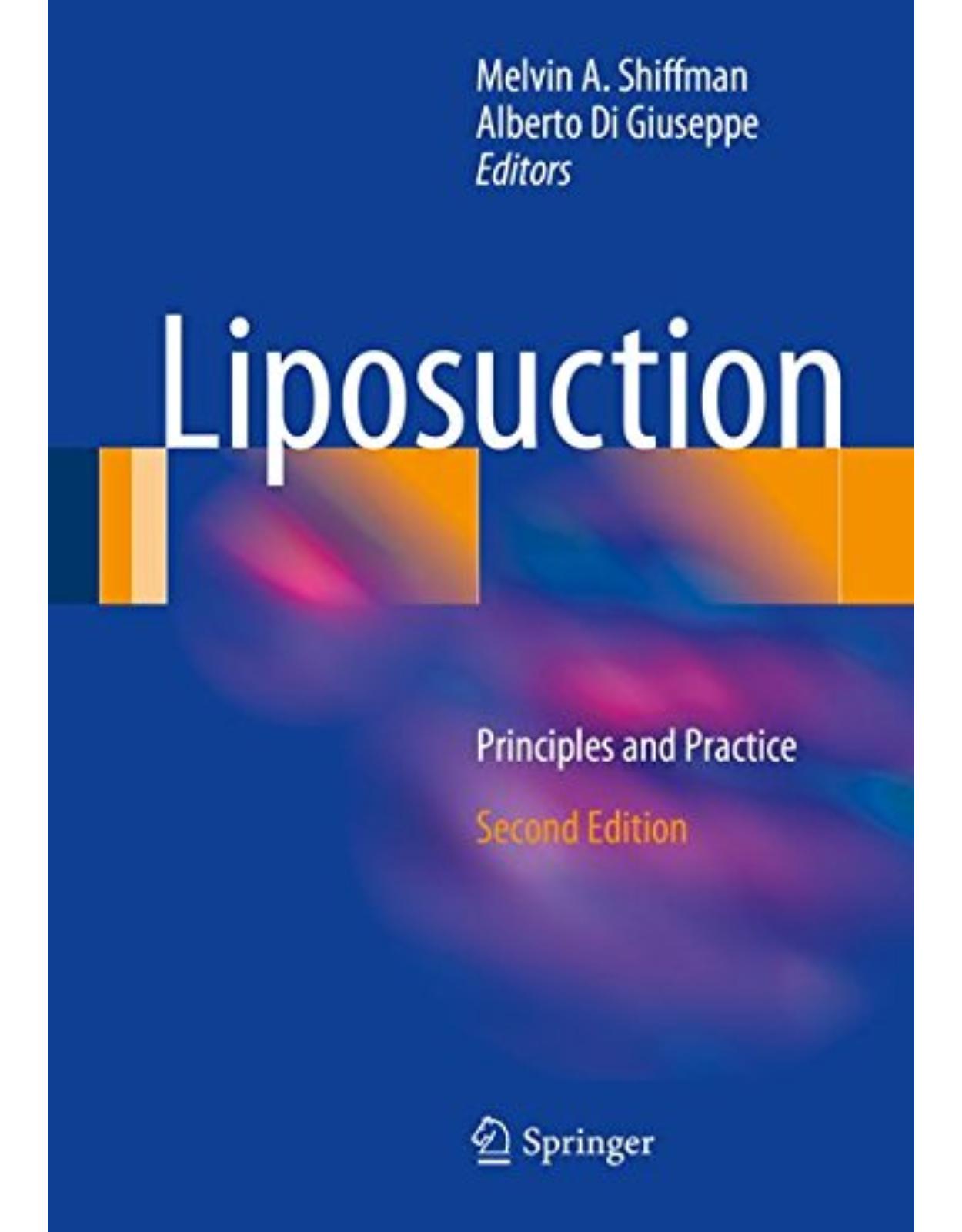
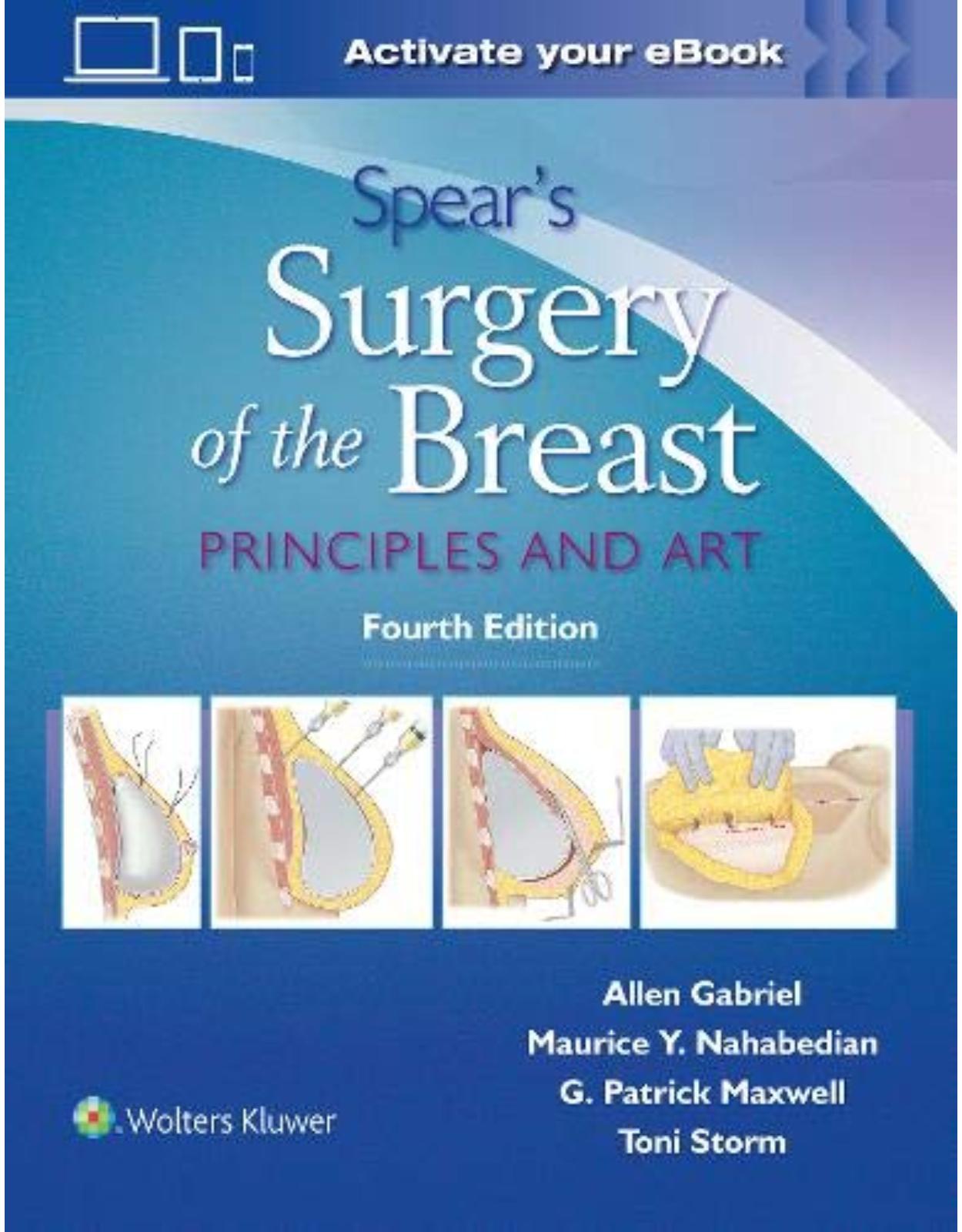
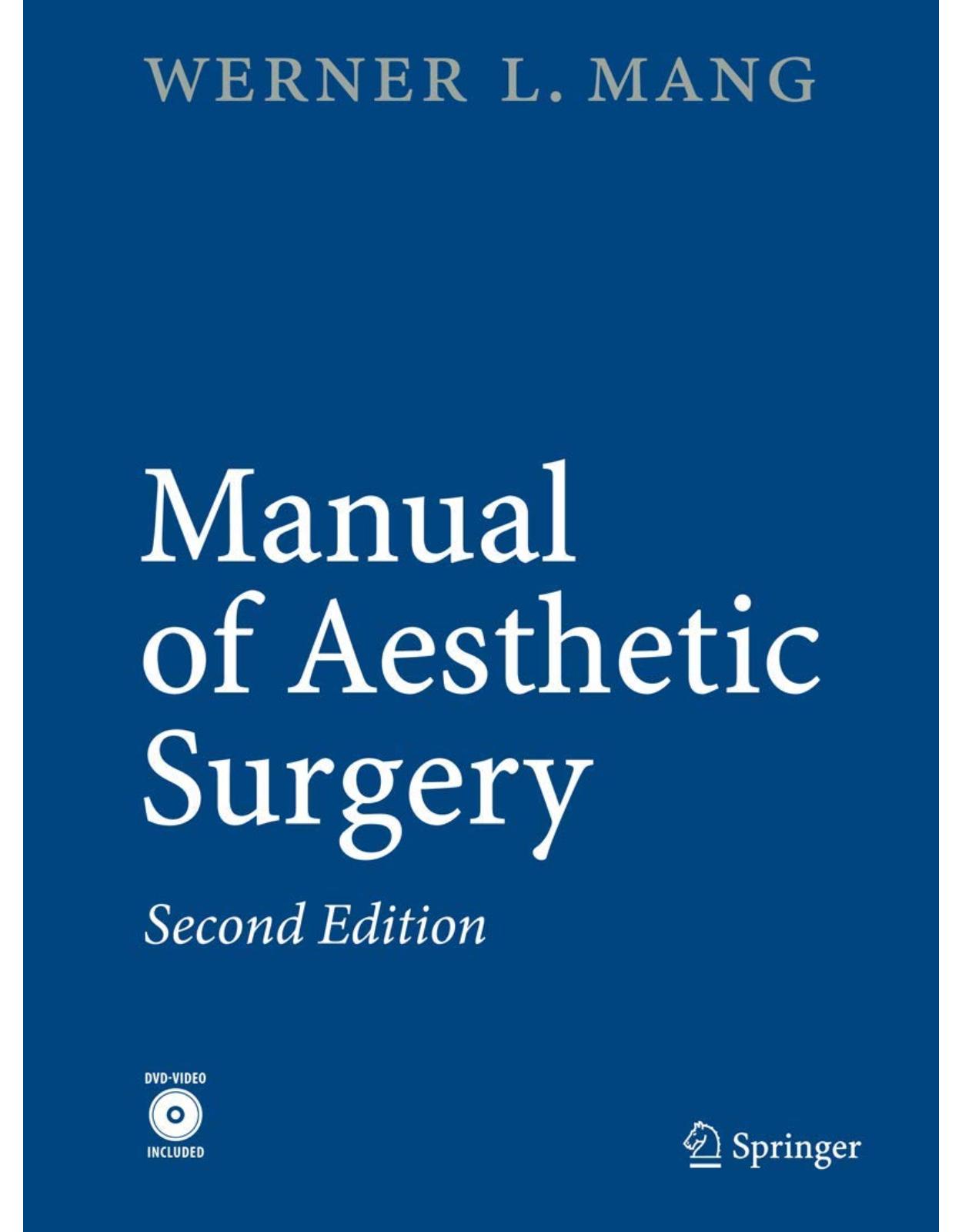
Clientii ebookshop.ro nu au adaugat inca opinii pentru acest produs. Fii primul care adauga o parere, folosind formularul de mai jos.